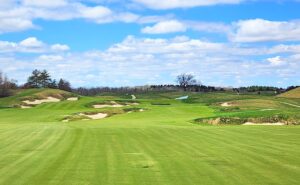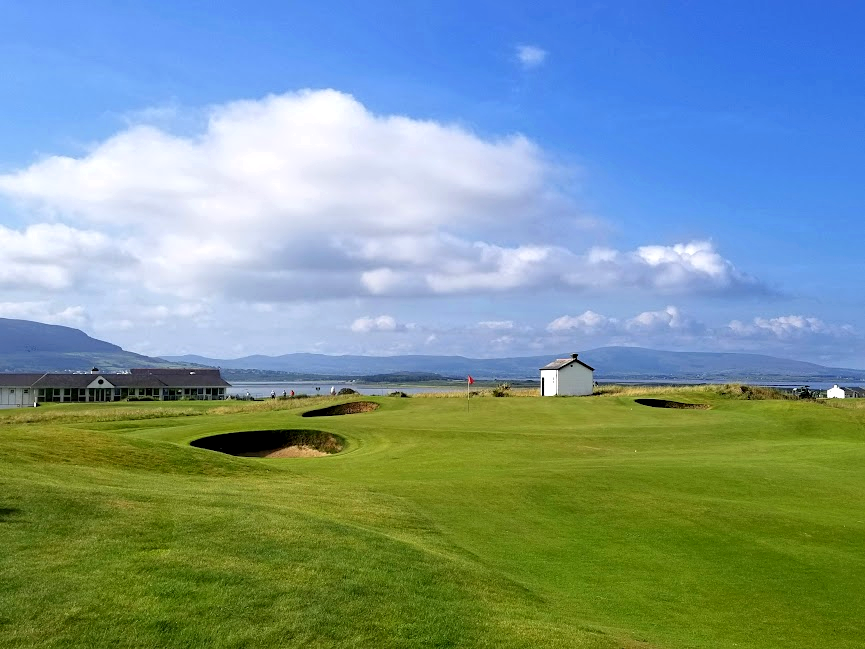
County Sligo Golf Club at Rosses Point is located along the Wild Atlantic Way on the west coast of Ireland in an idyllic setting beside the table mountain Benbulben on one side, and Knocknarea on the other. Breathtaking views are part of everyday life at one of Ireland’s great championship links. Famed architect Harry S. Colt redesigned the original links (first laid out by Capt.Willie Campbell) in 1928 & 1929.
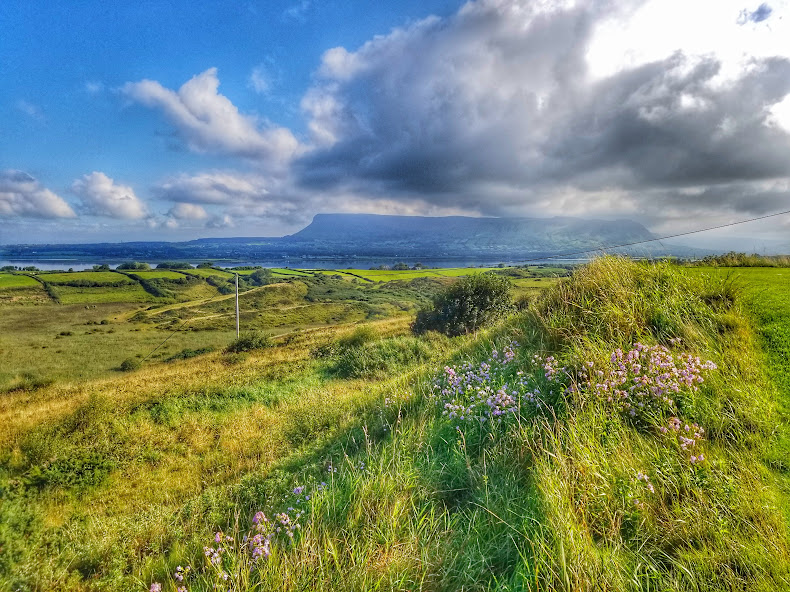
The club has been the home of the West of Ireland Amateur Open Championship since 1923 (Rory McIlroy won it in ’05-’06), has hosted the Irish Close Championship, and also was the venue of Irish Open Amateur Championship in 2019.
During our visit to the club several months back, we sat down for a Q&A with Head Greenkeeper Mark Millar (after our round with member and local legend David Dunne) to discuss his career and the operations at County Sligo Golf Club.
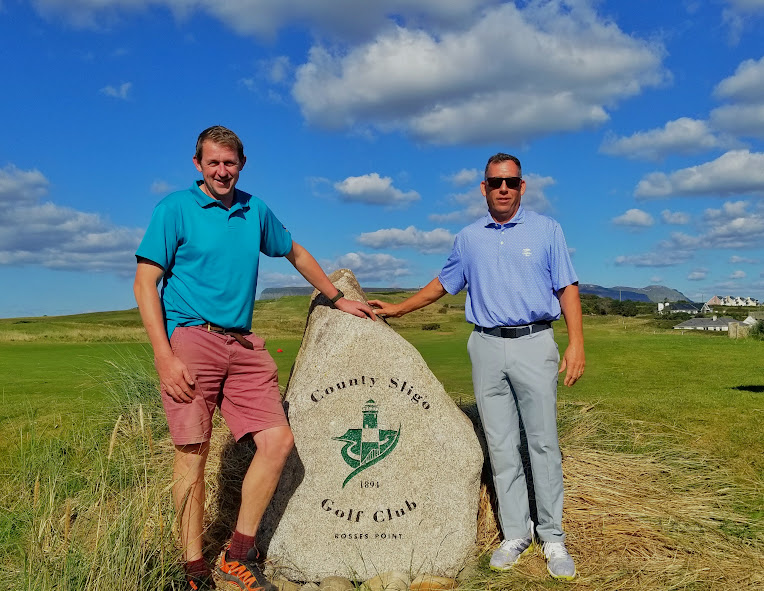
LinksNation: What an amazing setting you have here for links golf at Rosses Point, can you tell us how you became interested in the golf industry?
Mark Millar: I started playing golf at 14 years of age at a local golf club, nothing fancy just an 18-hole parkland and saw the guys on the lawnmowers and thought that looks like a cool job and the rest is history. So I went off to college for four years to get a foundation degree, I suppose I’ve been very fortunate, I’ve worked at a lot of the top golf courses around the world. Started off at my local golf club – Omagh Golf Club. After about 2 years, I thought I should move along if I really want to make a go of it, so I went to Royal Portrush and that’s where I finished my apprenticeship. I had an opportunity to go to Australia and went there and worked at Australian Golf Club in Sydney. Then I had an opportunity to come home and work at Lough Erne Golf Club, and did the grow-in there on the Nick Faldo design. I also worked in Sicily for 2 and a half years as well.
LN: Wow, Sicily. What is the predominant turf in South Italy?
MM: Believe it or not, Bermuda. On fairways, surrounds, and tees. I didn’t know much about those types of grasses, but my time there really taught me a lot about warm-season grasses.
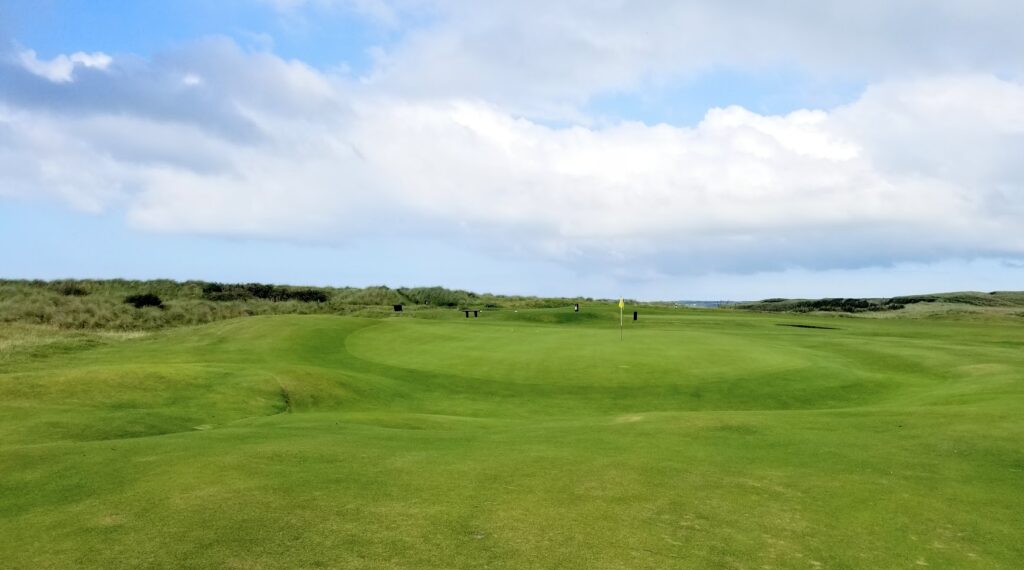
LN: Recently we sat down with Enda (Mulrooney) over at Enniscrone, I marvel at what he’s doing over there with a staff of six on such an enormous coastal property. How big is your staff, and the property?
MM: Eight. We run nine normally, but we’re one guy shy right now, on nearly 300 acres. There’s also a nine-holer down below as well (The Bomore Short Course).
LN: Wow. That’s no less impressive. I will definitely go down there this evening and walk that one after we’re done here. What is your biggest challenge here at County Sligo?
MM: We have issues with keeping sand in the bunkers, similar to what you described (with Ken Nice) at Bandon. Through the years even before my time here, they’ve changed the sand around. Different course managers, different committees, etc, they’ve tried different types of sand in there, coarser sand . . . we don’t use our natural dunes sand, we found it to be too light – it flies away in the wind too easily. We use a sand that’s more coarse and is a little heavier, the only problem is when it gets dry it becomes very fluffy. When stays damp, it’s nice to play from. It’s a challenge, when were dry and playing firm and fast, the bunker sand is a bit soft. But, our biggest challenge . . . we’re out in the west of Ireland here, we get more extreme weather than what they get in the east of Ireland. So, I always say the guys on the east side of the island get it a bit easier. Their temperatures warm up a bit earlier than ours, so their growing season lasts a bit longer and begins a bit earlier than ours. I just don’t think they get the extreme conditions we get over here. Weather is our biggest challenge.
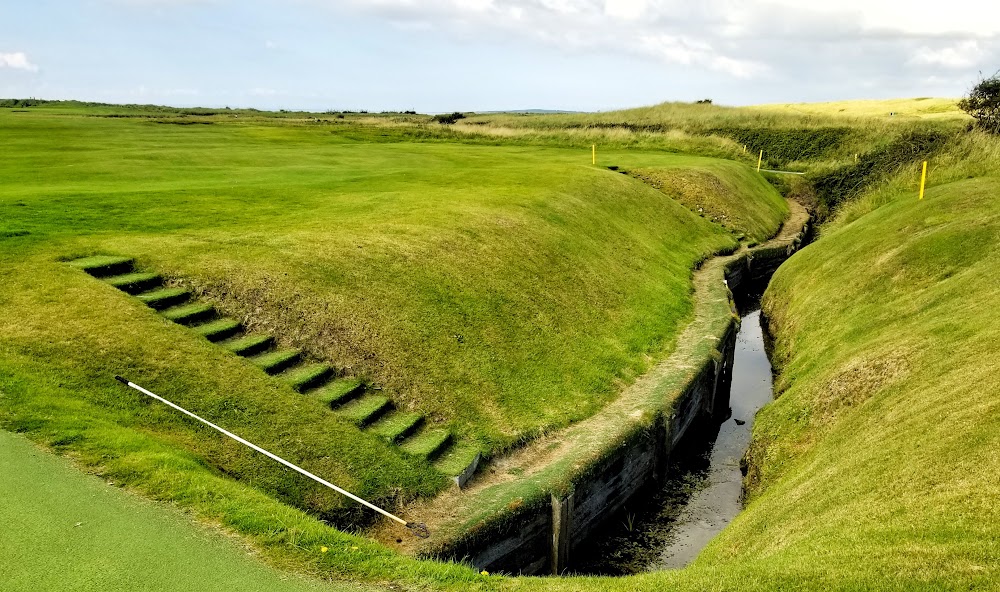
LN: What are your turf varieties, and are there certain greens here at Sligo that require a bit more care?
MM: Annual Meadow, Fescue & Poa.
But back to your previous question about challenges – All of these greens are different, the top greens 1, 3 & 4 get a bit more traffic than some of the others because some members like to come and play a quick six-hole loop. Those greens complexes are a bit higher, so they’re more prone to the weather. The ones that sit lower on the property are a bit sheltered from the weather. Organically, they are all basically the same. It’s definitely, traffic and weather conditions . . . So why do we have too much Meadow grass on those greens, is it too much traffic? Is it the Fescue isn’t establishing because of moisture, or is weather conditions? The greens were talking about struggle to maintain moisture, there’s a lot more wind up here. This is the “beggar’s challenge” I’ve found with links golf over the last 4 or 5 years – is retaining moisture. The Sunday night past we got rain, and Monday we went out and checked the moisture readings and we got a 22-23% reading, that’s where I try to keep them, That evening it had already dropped 7%. I’ve tried all of the wetting agents that are out there.
LN: It’s a catch 22 right? You want the firm/fast conditions but at the same time you’re trying to keep the playing surfaces alive and well. And, at the same time you have greens and spots on the property that require you to know what specific care each one needs to be healthy. This all takes time to learn when taking over an operation and a property of this size and magnitude. How long have you been at the club, and how long did it take for you to learn all of the nuance required to keep the place in peak form?
MM: I’m here about 7 years now, and I’m still learning (laughing). Shall we say, every day is a new day. You get to know which ones might begin to show disease quicker than the others, so you know to keep an eye on them a bit closer. A perfect example is 17 green, we probably give that area about 30% less water, because it just holds the moisture after a storm.
LN: I did notice you have a riveted sod-faced bunker done with synthetic turf out there that was done as trial sample. Obviously purists won’t care for it, but it’ll likely sustain for well over a few decades. Who really wants to spend the time and resources having to keep rebuilding those bunkers? What’s the verdict?
MM: Yeah, I’m on the fence, but that’s a good point. We could easily get 20-25 years out of it . . . and I’ve heard of guys that have drilled turf plugs into the synthetic where it becomes a blend. Our bunkers are high-impact bunkers, and we only get a few years out of them. Even this year, We were probably rebuilding an average of 20 bunkers every year. Your average golfer has no idea, but it is a an issue with purists. So that’s why I’m on the fence about it. The one we have at 9 green has been there for five years. I actually prefer when the moss builds up on it.
LN: Is Sligo your home, or do you commute? Do you live close to the club?
MM: I actually live about an hour away in Northern Ireland. The club here is about 45 minutes from the border, I’m just about 10 minutes from there.
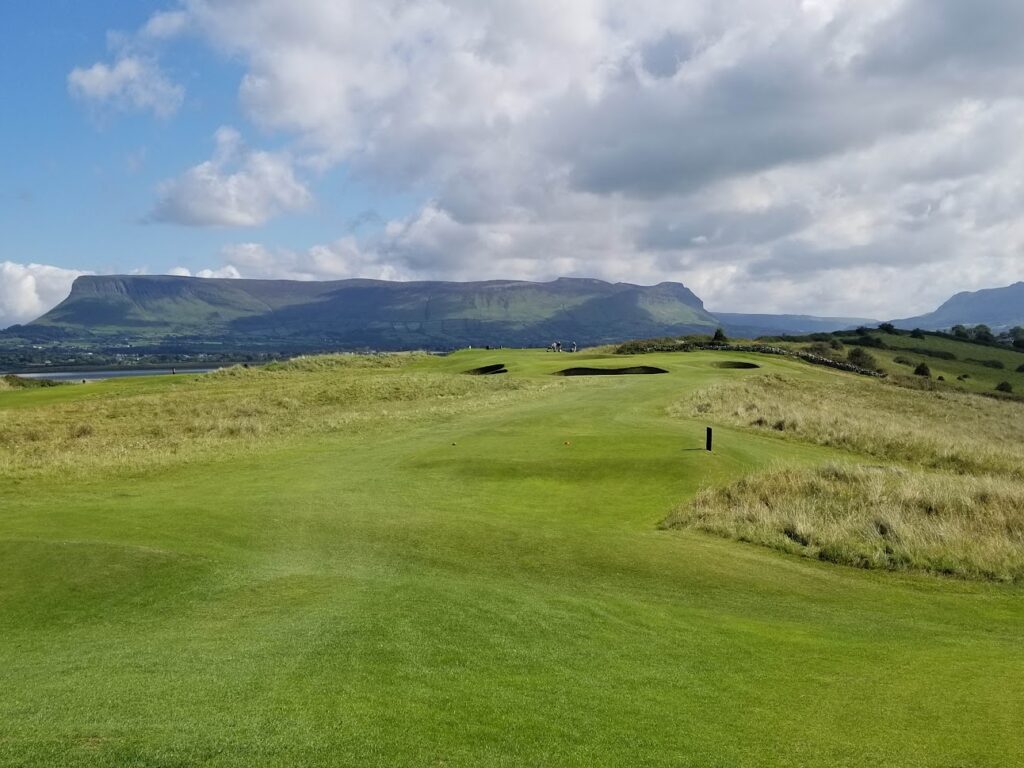
LN: The industry forms a bond among turf guys. Are you connected to the other Greenkeepers/Superintendents in the area?
MM: Oh yeah, around here all of the Greenkeepers talk, we often call each other on the drive to work each morning. Murvagh up at Donegal Golf Club, and Johnny (Shields) up at Portsalon. He’s the man. Chris up at Rosapenna, we’re all good friends.
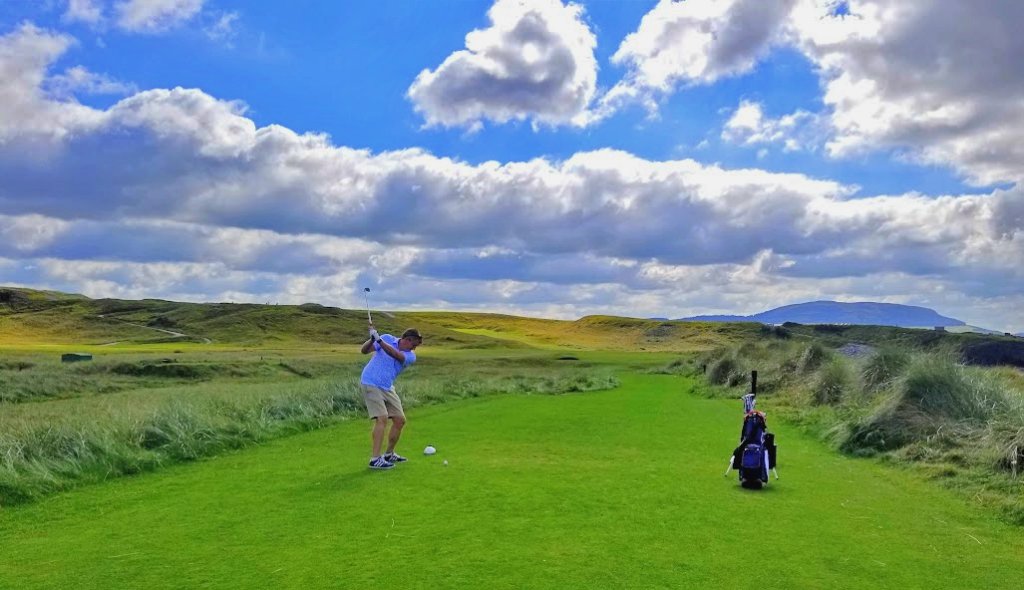
LN: I had the pleasure of playing today with one of your local best – David Dunne, just a great guy and a helluva player. Dunner has told me about many of the recent on course improvements and a few that may be on the horizon like the renovation of the fifth green. Can you elaborate?
MM: From what I see, there are always things to improve upon, loads of room for that. For such a small crew, we have accomplished a lot and the club wants to improve and is willing to invest back into the course. Rome wasn’t built in a day, all of our work over the last six years has been done in-house, so no outside contractors. We will be reshaping the green on the par 5 fifth and the par 4 tenth, as well as new main pipe work on the irrigation system as well – (all started in November ’22). Also 3 sets of green complexes will be rebuilt as well. Christmas week we’ll start on the bunker work. That’s the plan . . .
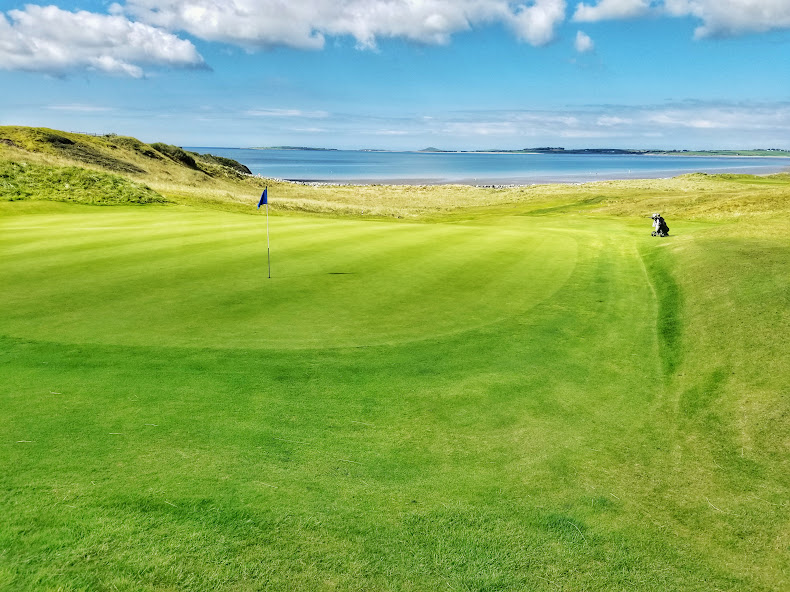
LN: You’ve got a lot on your plate . . .
MM: That’s only half of it. I made the decision Christmas of ’21 to go out on my own – so I’m now self employed and also employed here at the club. I started my own golf construction company, so that’s what I’m doing as well. I’m always looking for new challenges. I have a nice arrangement with the club. I’m busy with four different golf clubs right now. It’s balancing ok right now, everyone seems happy, but I’m not trying to take over the world (laughs).
Great to have you here, if you get some time go down and check out our short course – The Bomore Links.
LN: Will do, thanks for having us.
The Bomore 9 short course.
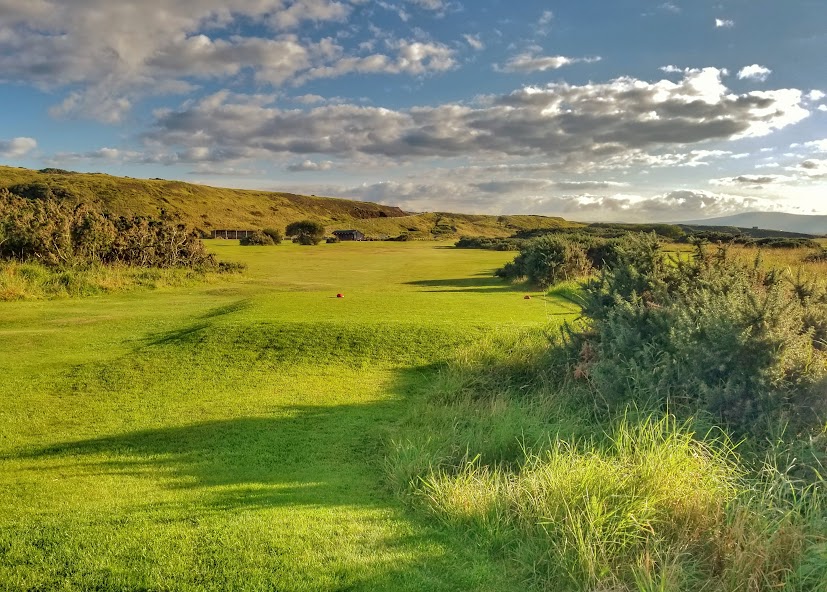
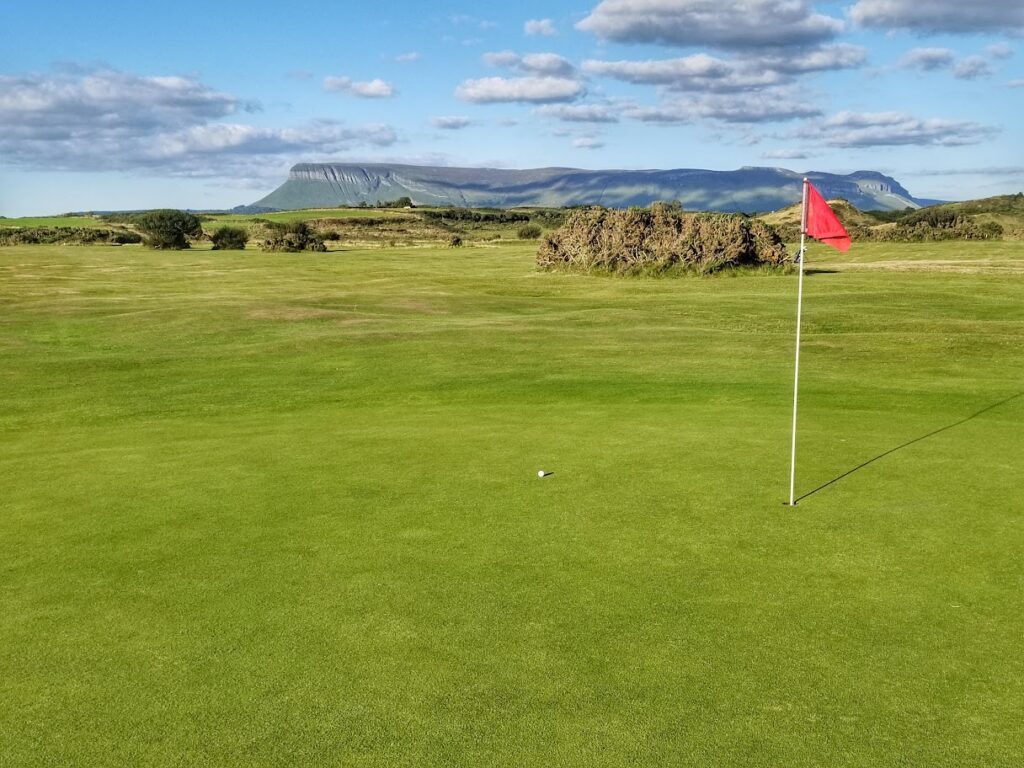
Bomore short course: The pasture land just below the clubhouse known as Bomore had many uses over the years. It was originally part of the Sligo racecourse in the 18th century and was used for horse racing until 1952. Then for many years, it was used for cattle grazing, and for a while it was used for an airplane hanger and runway. The golf club acquired the lease of the property in the sixties, and finally in the mid 90’s appointed Jonathan Tucker to design and oversee the short course construction.The project was completed and opened for play in 1999. It’s a really fun layout and an easy walk – the perfect way to start a day or chase the sun in the evening. The club’s range and practice area are located behind the ninth green and beside the parking area.
A big thanks to Links of Ireland and County Sligo Golf Club for hosting us. For more information on an Ireland golf vacation contact Justin Farrell at Links of Ireland: https://linksofireland.com/



